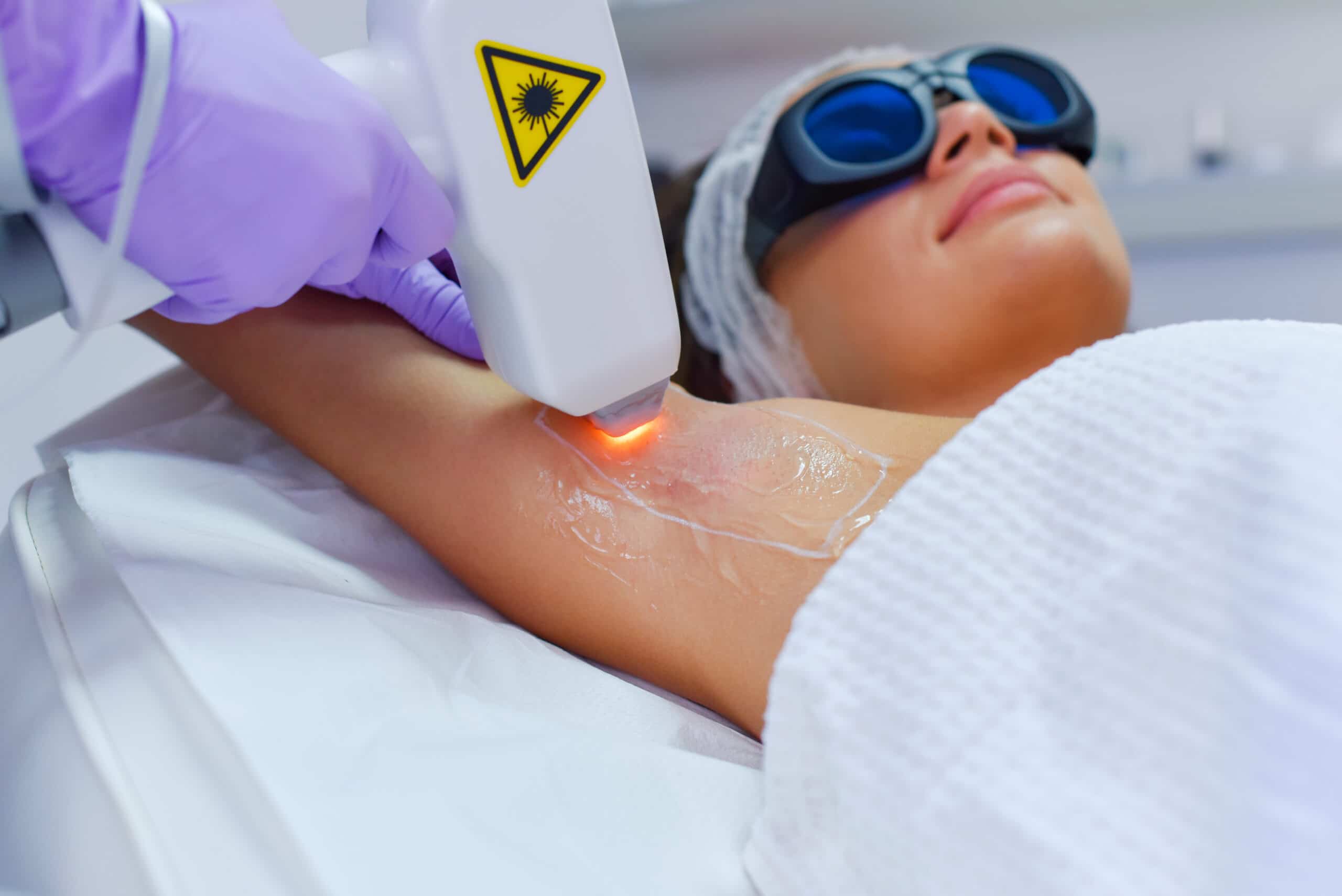Laser Hair Removal: The history of laser hair removal / At home laser hair removal vs professional hair laser removal

Since the beginning of time, men and women have had a strong desire to remove unwanted body hair. Ancient Egyptians used tweezers made out of seashells in order to remove hair from their bodies. In ancient times, hairlessness signified social position and wealth. Today’s most popular hair removal options include waxing, threading, shaving and electrolysis with laser hair removal the only one able to reduce hair on a permanent basis.
The very first laser designed to destroy hair follicles was invented by Theodore H Maiman on July 7, 1960. This ruby laser was inefficient and slow; it was able to minimize hair growth but also resulted in severe damage and burns to the skin. It could only target a few hair follicles at a time making hair removal a very tedious process.
The very first alexandrite laser was developed in the 1970’s. Although these lasers were much safer than the first one, it did not provide adequate heat to destroy the hair follicle. As a result it would have taken years to achieve permanent results.
The YAG laser was the very first laser approved by the FDA for hair removal in 1964. This laser was able to reduce hair growth but unable to remove hair on a permanent basis. In 1975, Harvard dermatologist Dr Thomas B Fitzpatrick created the Fitzpatrick phototyping scale which offers classifications for human skin color. It is used today in order to determine suitable candidates for laser treatment. Not everyone is able to benefit from laser hair removal since darker skin tones can absorb the laser’s heat causing skin damage. In 1983, scientists were able to develop a laser which utilized a pulse duration in order to target the hair follicle. As a result it was possible to target the follicle without damaging the skin.
It took nearly 40 years for scientists to develop an efficient laser system for hair removal purposes.
In 2008 the FDA approved the very first home laser hair removal system; the Tria Laser 4x. The Tria laser utilizes the same diode technology used at professional clinics while allowing consumers to remove hair permanently from the comfort of their own home.
Since then many at home laser hair removal machines have been approved by the FDA for permanent hair reduction. The majority of home removal hair systems on the market today are IPL based.
At home laser removal vs professional laser hair removal
A professional who is trained in laser hair removal will be able to assess your skin and hair type and will tell you if this treatment is appropriate. A trained clinician will also be able to administer the treatment without the risk of damage or unwanted side effects. Depending on where you want the hair to be removed, laser treatments may require more precision and training than you’ll get using a home system.
A professional administering the treatment will be sure not to miss spots, and brings skill and expertise to the procedure to ensure accuracy. At home, you’ll need to be very careful to pulse the entire area, and might want to have another person with you to make sure you don’t miss anything, or you’ll have irregularly shaped hairy patches growing back.
Although home laser systems work much the same way as professional ones, they use a lower intensity with less effectiveness. Many people find that the hair grows back faster and the treatments are less permanent than professional hair removal.
Because the intensity of at-home machines are not nearly as high as those found in professional salons, it takes a long time to do even a small area. While professional laser treatments also require multiple sessions, more hair removal is accomplished per visit and fewer treatments are needed. Home hair removal systems average about 10 or more at-home treatments to accomplish what three professional treatments can do.
Many at-home systems are not FDA-approved to remove facial hair, and also warn that their product is not appropriate for people with certain hair colors or skin types. Some machines will also ask you to select your skin type before using. Incorrect use can result in permanent damage such as pigment changes or scarring. Professional laser machines target more areas and an experienced aesthetician can consult with you beforehand to be sure you are a candidate for the procedure.
With at-home machines, you can control the intensity so that your pain level is tolerable. The downside is that if the intensity is too low, you’ll need many more treatments to achieve your desired results. Many clinicians who perform professional laser hair removal treatments will use a topical anesthetic to reduce your discomfort, so you can get the best results from your sessions.
At-home laser hair removal can be a reasonable option for some people; however, many men and women find that professional laser hair removal offers more advantages. If you want to get the same or better results with fewer treatments, be sure it’s done with a high degree of accuracy, and have someone else perform the treatment while you sit back and relax, professional laser hair removal is the best choice.